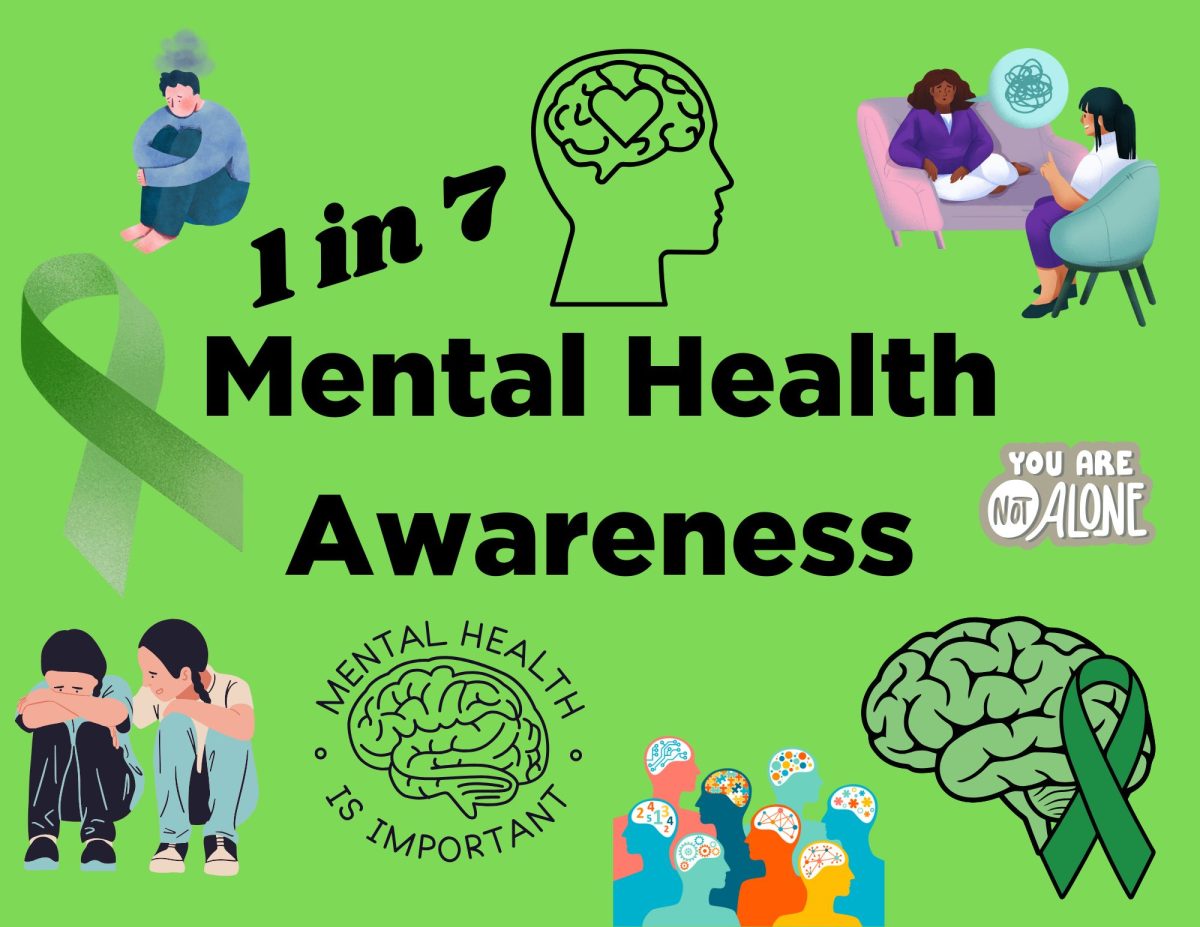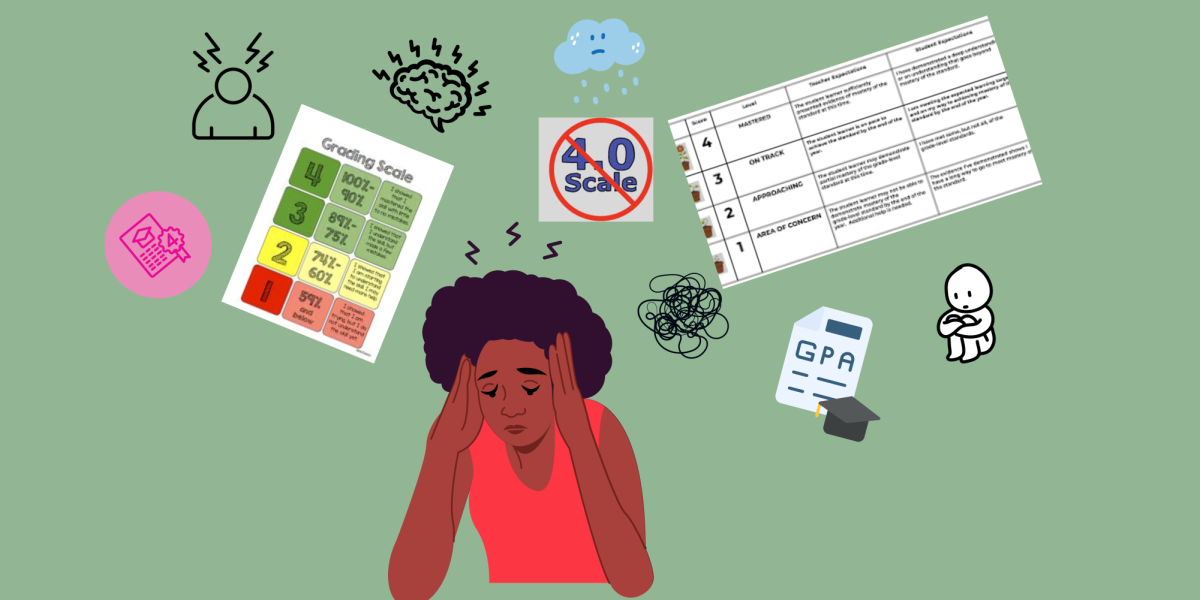From Feb. 24 to March 2, Eating Disorder Awareness Week will take place. Eating disorders have long been a pressing issue, especially in the modern era — and despite being a topic that is often considered “taboo” or “trivial,” eating disorders are more complex and nuanced than ever.
Defining Eating Disorders and Ways To Seek Help:
What typically comes to mind when hearing the phrase “eating disorder” tends to be that of a waifish, starved model, championing self-control and some odd sense of superiority for rising above basic human needs.
In reality, though, eating disorders do not have a “look,” and the way that eating disorders are perceived physically only contributes to the issue at hand.
According to the American Psychiatric Association, the types of eating disorders include (but are not limited to):
- Anorexia nervosa (the restricting of food intake in fear of weight gain)
- Bulimia nervosa (the binging and purging cycles of intentionally throwing-up or abusing laxatives in order to prevent weight gain)
- Binge-eating disorders (the eating of too much at one time, usually for comfort or emotional regulation)
- Avoidant restrictive food intake disorder, also known as ARFID (the consuming of foods that feel ‘safe’ to the consumer)
- Feeding disorders (the avoidance of foods of a certain texture or variety, typically in early childhood)
- Pica disorder (the eating of non-edible substances)
- Rumination disorder (the re-chewing and spitting-up of food, often to lose weight).
As per Boston Children’s Hospital’s Center for Eating Disorders, a few warning signs of eating disorders include: quick weight loss, restriction, rules surrounding feeding and exercising, excessive exercise, body dysmorphia, consuming food secretly, and going to the bathroom after meals.
It is important to remember that eating disorders do not all look the same, and more often than not, signs are invisible or are celebrated. Those struggling with eating disorders are often praised for their unhealthy behaviors and loss of weight, especially online and in family/cultural dynamics.
If you, or anyone you know, is struggling with an eating disorder, Danville High School counselors, teachers, and staff are always available. The hotline for mental health crises is 988.
The Cultural Issues With the Perception of Eating Disorders:
Those who do not struggle often ask: how is it possible that one could form such a negative attitude toward food? There is an obvious link between nutrition, health and weight, but being “thin” is not necessarily the only goal or reason for the development of an eating disorder.
When the causes of eating disorders are questioned, many things are assumed: the media, clothing sizes, unrealistic beauty standards, sexual assault, bad childhoods, and nearly everything else in the world. However, these assumptions are not always accurate.
In an interview with Channel 4 News in 2012, fashion mogul, Karl Lagerfeld, whose models hold an average BMI of 17 (underweight), quoted that the cause goes as follows: “The story with anorexic girls—nobody works with anorexic girls. That has nothing to do with fashion. People who have that, they have problems with family and things like this. There are less than 1% of anorexic girls, but they are over in France.”
The media does indeed push rhetoric that discredits eating disorders and their prevalence. Alongside that rhetoric, though, there are distinctions specifically within gender and race — with most eating disorders affecting white females in suburban areas. In fact, there is a movie about this phenomenon, “Starving in Suburbia.”
Again, the fact that eating disorders largely affect a certain population does not mean that other populations are not affected by such matters. The issue of undiagnosed eating disorders and poor healthcare is a major issue suffered by Black and other racial minority communities.
According to the DSM-5 criteria for anorexia diagnosis, “Severity is based on body mass index (BMI) derived from World Health Organization categories for thinness in adults; corresponding percentiles should be used for children and adolescents: Mild: BMI greater than or equal to 17 kg/m2, Moderate: BMI 16–16.99 kg/m2, Severe: BMI 15–15.99 kg/m2, Extreme: BMI less than 15 kg/m2.” Atypical Anorexia features the same set of mental criteria, but without BMI standards, according to the DSM-5 structure under the National Library of Medicine.
The structure of diagnosis for anorexia, specifically, is incredibly biased— as one must be underweight on the BMI scale, or else one will face the mentally devastating diagnosis of “atypical anorexia,” which is often taken by patients as a sign that they aren’t “anorexic enough.”
In the cultural sense, again, the number of eating disorders in the media seems more prominent than ever. Of course we saw the first major wave of this behavior in the ‘90s and late 2000s, with models like Kate Moss pushing the agenda that, “Nothing tastes as good as skinny feels.”
However, into the 2010s, with the counteraction of the body positivity movement and the beauty standard shifting more so toward curvy women like that of the Kardashians, it was assumed in most major media that the era of the “heroin chic” was over.
Today, it seems that whenever I open TikTok or Instagram, I am bombarded with “What I eat in a day,”, “thinspo,” “big-back activities” and “hourglass workouts.” Like most cycles, trends do make their way around — and it seems the “Y2K aesthetic” is making a resurgence, but with it is also the mentality of marketed eating disorders and the notion that women’s bodies are trends, able to be changed on a whim.
To younger and unknowing audiences, the media promotes this idea—take, for instance, the Ozempic craze and why opinions/articles surrounding the Grammys are titled things like, “2025 Grammys – Everyone Is So Skinny” (a popular opinion piece by user sierrainsf on Instagram’s joint app, Threads).
What are the Appeals of Eating Disorders?
Despite the technicality of it all, eating disorders might seem appealing due to a culmination of so many experiences socially and culturally. There is not one specific cause, no pinpoint solution.
What I have noticed, as a female teenager on social media, is a rhetoric that romanticizes the mindsets of eating disorders.
I remember my first exposure to any content regarding eating disorders was a YouTube video about two starved cheerleaders who were sharing their story of both sickness and slow recovery.
When I watched this video at about 8 years old, I wondered how someone could give up food so easily and readily—I mean, who doesn’t love food? At the same time, it was like an urge crept upon me. Repeatedly, secretly and ashamed, in some innermost twisted feeling sprouting out of a place I cannot even know or describe, I wanted to be like them. There was something mysterious and desirous about consuming less, something addictive about being so thin — maybe it was a feeling ushered in by my perfectionist tendencies — but nonetheless, losing weight and being perceived as “skinny” was defined to me, at 8 years old, as achievement and desirability.
Social media is a haven for such instances like these. From promoting eating-disordered blogs on X, to aesthetics with a focal point on thinness (being an “almond daughter,” “clean girl,” etc.), it is no wonder that the appeal of eating disorders and body image issues are targeted at mainly young, female audiences.
Again, there is no direct cause of eating-disordered behaviors, but the rhetoric found in modern media is so incredibly sly about its promotion that it, in itself, is a sociological phenomenon to be aware of. Such content contributes to disordered thinking without much conversation or controversy.
The issue with any media regarding eating disorders, even if it promotes recovery, is that when paired with disordered perceptions, it is perceived by the viewer in their own framework of mental illness.
For instance, videos on popular platforms detailing the effects of eating disorders or including pictures of nearly gory thinness to stave off those considering starving themselves often receive comments by those suffering who perceive such content as inspiration for what they want to be. This is even if it means being sick or experiencing a whole slew of symptoms ranging from hair loss, constipation, coldness, fur-like hair growing on the skin, and/or a lack of emotional regulation.
The complex issue is that when eating disorders are paired with media in any way, there often cannot be a positive interaction due to the very nature of eating disorders. Again, eating disorders are mental disorders — but that is not to say sufferers are unfeeling or not like others because they are struggling.
Eating disorders, at least in my experience, have been about a sort of disconnection between the mind, the body and social perception. These are huge facets in our society that we try to control by “rising above” and challenging the norms. With that, it is easy to romanticize the “nobility” of eating disorders, and it is so easy to link the failure of certain mental standards to shame and guilt.
No matter how glamorous the pursuit of thinness or eating disorders may look, especially in the media and from a disordered standpoint, the most important thing to remember is that eating disorders are born of human ills like fear, trauma and perception. It is incredibly easy for our minds to fall victim to rhetoric catered toward us and our struggles.
Again, Danville High School staff members and counselors (Shelly Ayers and Patrick Pemberton) are always available no matter the struggle. The hotline for mental health related crises is 988.


















